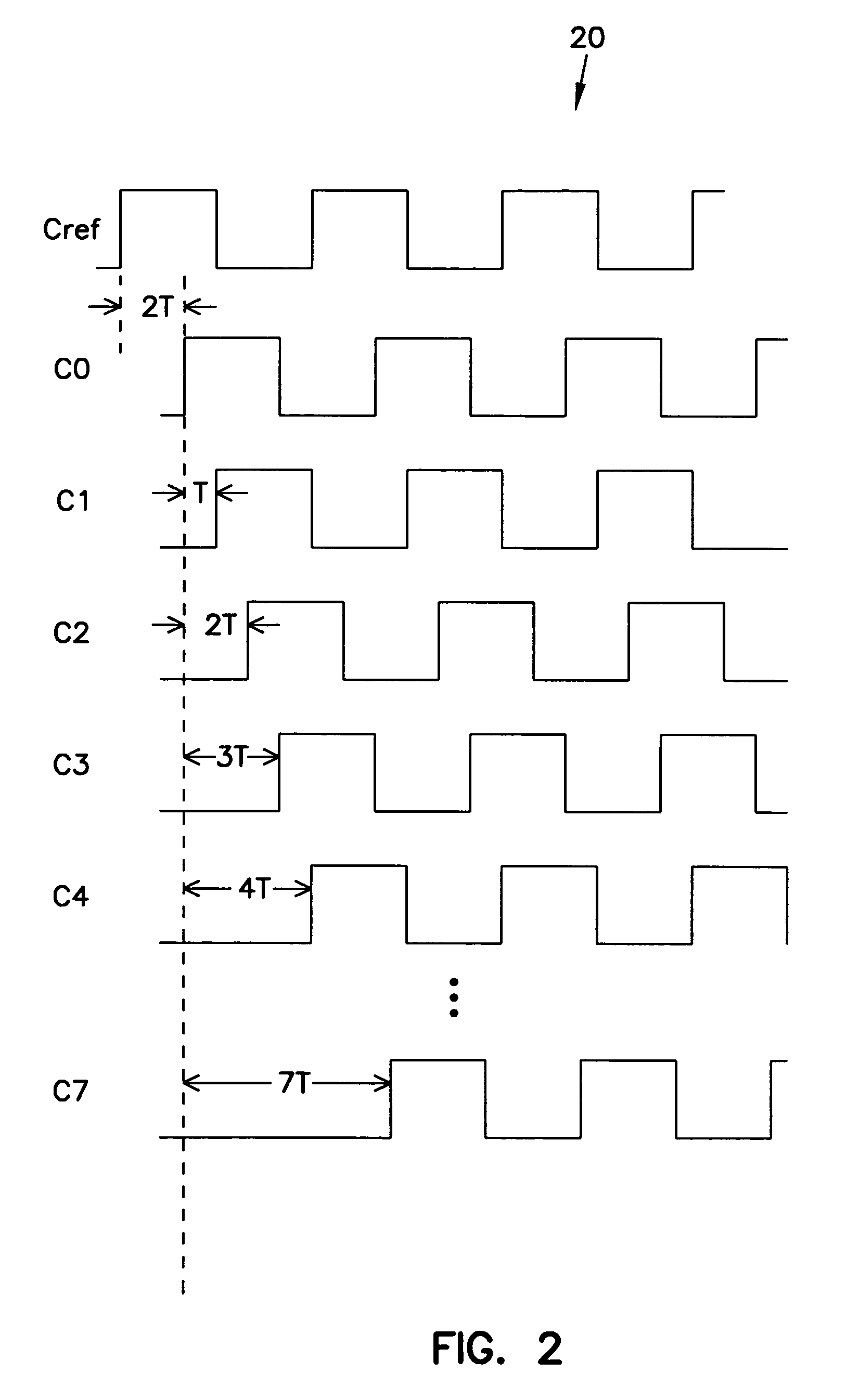Interlaced delay-locked loops for controlling memory-circuit timing
a delay-locked loop and memory-circuit technology, applied in the direction of pulse automatic control, pulse technique, multiple input and output pulse circuits, etc., can solve the problems of increasing the difficulty of design delay-locked loops which produce signals with smaller delays, adding a significant amount of circuitry, and conventional delay elements only reliably providing a minimum delay of about 100 picoseconds
- Summary
- Abstract
- Description
- Claims
- Application Information
AI Technical Summary
Benefits of technology
Problems solved by technology
Method used
Image
Examples
Embodiment Construction
[0027]The following detailed description, which references and incorporates FIGS. 1–11, describes and illustrates specific embodiments of the invention. These embodiments, offered not to limit but only to exemplify and teach the concepts of the invention, are shown and described in sufficient detail to enable those skilled in the art to implement or practice the invention. Thus, where appropriate to avoid obscuring the invention, the description may omit certain information known to those of skill in the art.
[0028]FIG. 1 shows a block diagram of an exemplary clock-generation circuit 10 embodying concepts of the present invention. Circuit 10 includes an input terminal or node 11 for receiving an input (reference) clock signal Cref, and two interlaced delay locked loops 12 and 14 for providing a set of clock signals delayed a multiple number of delay periods T relative reference clock signal Cref. T represents a desired time delay which generally requires use of interpolation circuitr...
PUM
 Login to View More
Login to View More Abstract
Description
Claims
Application Information
 Login to View More
Login to View More - R&D
- Intellectual Property
- Life Sciences
- Materials
- Tech Scout
- Unparalleled Data Quality
- Higher Quality Content
- 60% Fewer Hallucinations
Browse by: Latest US Patents, China's latest patents, Technical Efficacy Thesaurus, Application Domain, Technology Topic, Popular Technical Reports.
© 2025 PatSnap. All rights reserved.Legal|Privacy policy|Modern Slavery Act Transparency Statement|Sitemap|About US| Contact US: help@patsnap.com



